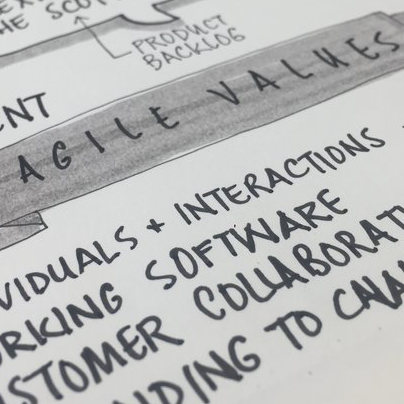Bending Agile for content production
I'm not sure if there is very much information out there about running content production within an agile framework, or if I just didn't spend enough time looking. I dare not look now for fear we've been doing it all wrong!
Of course we're not doing it all wrong because I know we're doing it right for us. That's one of the many powerful things about Agile and Scrum - the framework has room for enhancements to suit the participants.
Ways of Working
Initially we didn't think we'd run the content team on the Agile framework. We weren't sure how we could "do Agile" without a Product Backlog, or Stories, or Content Product Owner. We could see we needed a self-managing team of experts to complete the work, but initially couldn't see how the other Agile aspects worked in our particular situation.
That was until we realised that the structure of the new site was essentially our backlog. We had to fill the new website with content, right? And if our backlog was the new sections of the website, then the content became the stories.
We still didn't have a Content Product Owner, but the Delivery Team's Product Owner had the vision and promises to keep. She had agreed to complete the website by a certain date (not very Agile but that's another story and was out of our control), and our website had a priority audience to cater for: prospective students.
So with that information on board, we had a way of prioritising content - just like a Product Owner would do with her Product Backlog.
Ways of tracking
If I can offer any advice when it comes to hiring for strengths when assembling your content team, may I strongly advise that hiring a person who is passionate about spreadsheets will pay back in spades. We are extremely fortunate that our Content Lead is our spreadsheet guy. He has developed, and continues to enhance, shared Google Sheets that we can access from anywhere.
These spreadsheets our source of truth. It tells everyone on the team which sections are prioritised, who's working on them, what their status is and, most importantly, how much we have to do to meet our promises. Our Spreadsheet Guy has created dashboards so we can quickly see where we are in the content production cycle.
The spreadsheet has become as important to our team as any other member. It has also become a bit of a star at Showcase when we share our progress to the wider community.
Ways of communicating
Our team is co-located; that means we sit close to each other. In fact, we sit on the same floor as the Delivery Team too. I have become a massive fan of co-location which also helps support one of Agile's four values: individuals and interactions.
We also use virtual communications too for when members aren't at work or with remote developers, but having people close is incredibly efficient. When we want people to join a virtual conversation, we set that up in our video conferencing tool and share the link in Slack.
Slack is a real-time messaging application that has all but replaced email on this project. The number of emails I receive within our project each week can be counted on one hand - and not even using all my fingers! Links are shared in Slack, prototypes uploaded, questions asked, conversations conducted, files shared. We have a series of channels with appropriate access for those who need to be able to communicate within them as well as a couple of #general and #random ones that anyone can see.
Ways of documenting
Like any project, we need to record information. When a decision has been made, and a way of proceeding decided - maybe we've worked out a framework for writing to our personas, or have developed a style guide for use on the new templates - we record these more permanent pieces of information and knowledge to the Wiki so everyone in the team can access to view and update them.
Slack has some great tools built in as well. As well as being right there on everyone's device, Slack's Bot can be set to answer with a link to the appropriate document when a question is posted. For instance, whenever someone asks about the location of our Communications Log, the Slack Bot answers with a link and boom, you no longer have an excuse for not keeping it up to date.
Associated links
- Agile framework (Wikipedia)
- Google Sheets
- Slack
- Zoom
- Wiki (Wikipedia)






